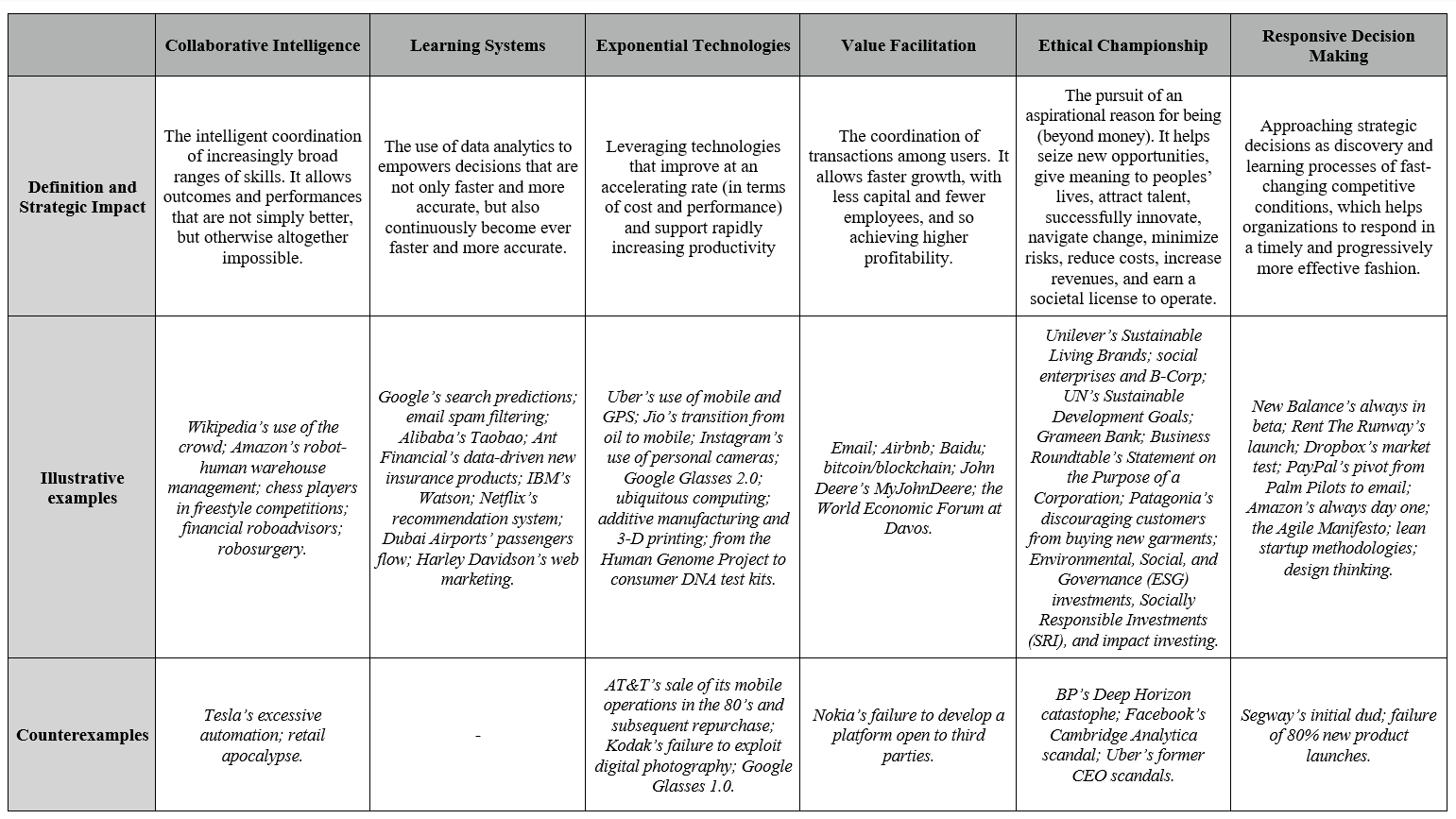Building the strategic architecture of the post pandemic corporate landscape


· 5 min read
The COVID-19 pandemic has been a major disruptor for tried and tested approaches to strategy. More specifically, it has promoted two business practices: digital transformation and sustainability. Even as the pandemic still impacts our lives, companies are stepping up their efforts and new imperatives and business models keep emerging as a validation of new organisational practices and norms. The pandemic has not only changed our perception of the world but equally accelerated our adoption of new work and production models which become visible and shape a ‘new normal.’ How do business leaders seize the opportunities in the new normal?
To successfully navigate the upheaval caused by the pandemic, business leaders must reconsider their strategy. Two of the key strategy questions they must answer are: where their company will play and how it will win. This article provides two research-based frameworks to answer these two critical questions.
To answer the first question, DRIVE (Tse and Esposito, 2017) assists decision-makers in tracking the megatrends that shape the competitive landscape and in identifying major emerging opportunities, which traditional tools for strategic planning might only capture when it is too late. For the second question, CLEVER (Lanteri, 2019) points out the drivers of strategic advantage decision-makers should leverage to maintain a competitive edge. Jointly, the two frameworks constitute the foundation of a new strategic architecture that empower firms to identify growth opportunities and successfully organise to pursue them in the turbulent, post-pandemic world economy.
The two frameworks were originally designed with a focus on businesses’ future fitness, integrating adaptable and flexible thought processes in their functioning. They were designed as non-exhaustive instruments to grasp the flow of the times in which we are living, in an increasingly complex world, where linear models of distribution are less and less functional to the purpose of prediction and forecast.

As shown in figure 1, the macro level of analysis assesses the environment and the nature of the forces that are shaping the conditions for business and public policy to operate. From the scanning of the externalities to the detection of grassroot movements, to the discovery of growth models that traditional economic indicators can easily miss, this level of analysis is necessary to determine the magnitude and direction of the trends.
The meso level of analysis refers to the institutional and intermediated level of the economy in which a chain of entities operates as connectors between forces at the macro, and execution at the micro level. The meso level provides opportunities for formulation of strategy and ideation of business models that probe markets and reconfigure systems.
The micro level involves the most active agents in the economy, including consumers and individuals, who make decisions based on limited information, sentiments and access to opportunities. It is where markets get validated and where decision-making blends theoretical assumptions with projectable actionability and where the socio-economic system enables itself.
Our frameworks combine all three analysis levels in rigorous research with practical design aimed at facilitating the transformation of systems. A deeper understanding emerges from the nature of the trends as well as from the ideation of how the trends can shape strategy.
During the research, we investigated the junctions where current macro trends set the trajectory for future events. In the vast ocean of knowledge, information, and data, we found five undercurrents that can give us some directions as to how the future would unfold. These five paths aren’t exclusive or exhaustive. Most are likely a minimal representation of all undercurrents that interplay with the shaping forces of our societies, but with this in mind, we have narrowed the research down to five megatrends, which we call the DRIVE framework, consisting of the following:
Each of these megatrends is unique, but, in combination, they can present a comprehensive picture of what the future holds and help us picture a future in the making.
Looking through the meso-level lens, CLEVER lays out the drivers and forces that offer strategic advantages and – therefore – trigger strategic change. The drivers are:
The first three represent the ‘hard’ features—the technological components, with the remaining three capturing decision-making and managerial styles. Table 2 describes the definition and strategic advantages of each driver as well as illustrative examples and counterexamples.

The challenge in this new normal is identifying existing frameworks that can help synthesize some of the issues we are facing. The two frameworks we discuss here capture emerging approaches to strategic decision-making and jointly help decision-makers identify growth opportunities and successfully organise to pursue them in the turbulent, post-pandemic world economy.
These frameworks do not aspire to be perfect. In turbulent times, with multi-causal patterns and non-linear trajectories of change, the future cannot be predicted. So, even equipped with the DRIVE and the CLEVER frameworks, decision-makers might still face sudden black swans and wildcards that lead to unexpected circumstances and rapidly shifting competitive scenarios.
The frameworks should instead be judged by their usefulness. In the years spent researching and refining our frameworks, we have witnessed first-hand how they have been applied in dozens of companies across industries and geographies. Business leaders can use the two frameworks to understand where strategic opportunities emerge, to find inspiration for strategic action, and so ensure their organisations become future-ready in the post-pandemic era.
This article is also published on the London School of Economic's Blog. Energy Voices is a democratic space presenting the thoughts and opinions of leading Energy & Sustainability writers, their opinions do not necessarily represent those of illuminem.
Glen Jordan

Sustainable Lifestyle · Sustainable Living
illuminem briefings

Architecture · Carbon Capture & Storage
illuminem briefings

Labor Rights · Climate Change
Financial Times

Carbon Market · Public Governance
GB News

Carbon · Sustainable Mobility
The Independent

Effects · Climate Change